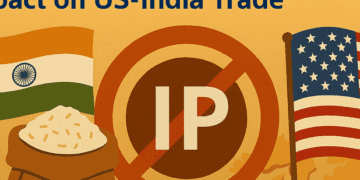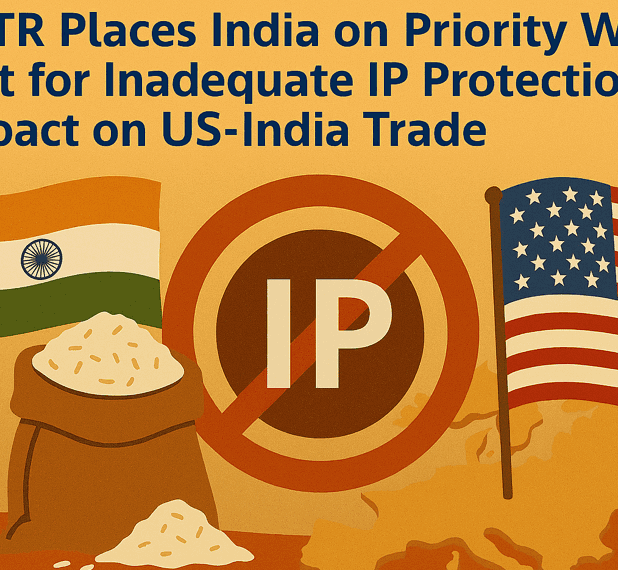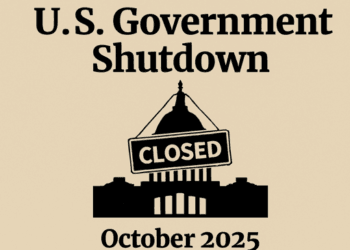USTR Places India on Priority
In its 2025 Special 301 Report, the Office of the United States Trade Representative (USTR) has once again placed India on its Priority Watch List, citing persistent shortcomings in intellectual property (IP) protection and enforcement. This designation has sparked renewed debate over India’s IP regime and its implications for bilateral trade, innovation, and foreign investment.
Background: What Is the Priority Watch List?
The Priority Watch List is part of the USTR’s annual Special 301 Report, which evaluates the adequacy and effectiveness of IP protection among U.S. trading partners. Countries on this list are considered to have serious deficiencies in IP enforcement, market access, or legal frameworks that affect U.S. stakeholders.
Countries on the 2025 Priority Watch List
- India
- China
- Russia
- Argentina
- Mexico
- Indonesia
- Chile
- Venezuela
Key Concerns Raised by USTR
The USTR report highlights several areas where India’s IP regime falls short. These include patent disputes, copyright enforcement, online piracy, and counterfeiting. The report also points to delays in judicial processes and lack of transparency in regulatory decisions.
Specific Issues Noted
- Patent revocations and compulsory licensing in pharmaceuticals
- Weak enforcement against counterfeit goods
- Online piracy of digital content and software
- Limited protection for trade secrets
- Inconsistent application of copyright laws
India’s Response
India has defended its IP policies as being compliant with WTO’s TRIPS Agreement and tailored to domestic public health and development needs. Officials argue that the country balances innovation with affordability, especially in the pharmaceutical sector.
Statements from Indian Authorities
- “India’s IP framework is evolving and reflects our socio-economic priorities.” – Ministry of Commerce
- “We remain committed to strengthening enforcement and judicial capacity.” – Department for Promotion of Industry and Internal Trade (DPIIT)
Impact on US-India Trade Relations
India’s inclusion on the Priority Watch List could affect investor sentiment and trade negotiations. While the two countries maintain strong commercial ties, IP concerns may complicate future agreements, including digital trade and technology transfers.
| Sector | US Concerns | India’s Position |
|---|---|---|
| Pharmaceuticals | Patent protection, data exclusivity | Affordable generics, public health |
| Digital Media | Piracy, copyright enforcement | Strengthening cyber laws underway |
| Technology | Trade secrets, software IP | Startup-friendly IP reforms |
Industry Reactions
Industry bodies in both countries have expressed concern over the designation. U.S. pharmaceutical and entertainment companies have urged stronger enforcement, while Indian exporters worry about reputational risks and trade barriers.
Quotes from Stakeholders
- “IP uncertainty affects our investment decisions.” – US Chamber of Commerce
- “We need clarity and consistency in IP rulings.” – Indian Pharmaceutical Alliance
- “Digital piracy is a global issue, not just India’s.” – FICCI Media Division
Legal and Policy Developments in India
India has taken steps to improve its IP ecosystem, including digitizing patent filings, launching IP awareness campaigns, and setting up commercial courts. However, implementation remains uneven across states.
Recent Initiatives
- National IPR Policy 2.0 under review
- Fast-track IP dispute resolution pilot in Delhi and Mumbai
- Online copyright registration portal launched
- IPR awareness drives in Tier-2 cities
Geopolitical and Strategic Implications
The IP debate is part of a larger strategic dialogue between India and the U.S. As both nations seek deeper cooperation in defense, technology, and supply chains, resolving IP issues will be crucial for trust and alignment.
Strategic Considerations
- Impact on Indo-Pacific digital corridor initiatives
- Influence on semiconductor and AI partnerships
- Role in Quad’s innovation and cybersecurity agenda
Conclusion
India’s placement on the USTR Priority Watch List underscores the need for continued reform and dialogue. While the country has made progress, gaps in enforcement and legal clarity persist. Strengthening IP protection will not only improve trade relations but also foster innovation and global competitiveness.
Postscript: What to Watch Next
Key developments to monitor include India’s revised IPR policy, bilateral trade talks, and stakeholder consultations. The next Special 301 Report in 2026 will likely reflect the outcomes of these efforts. For now, the spotlight remains on India’s IP landscape and its role in shaping the future of US-India trade.




















